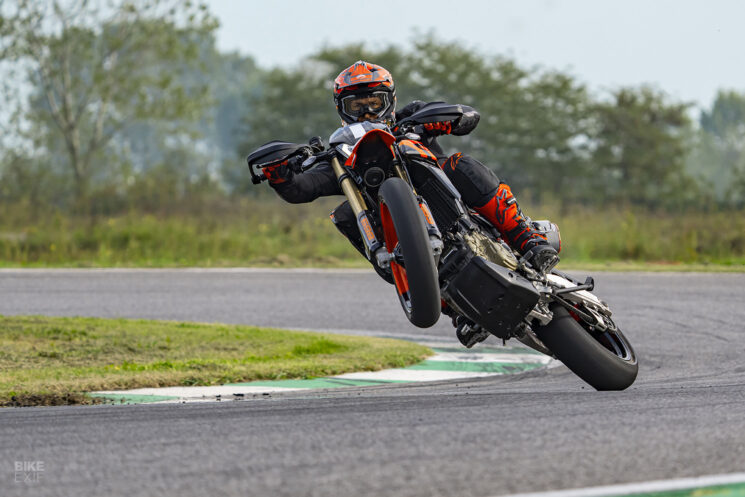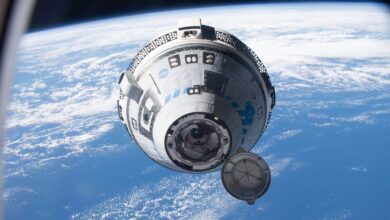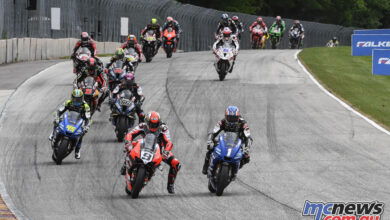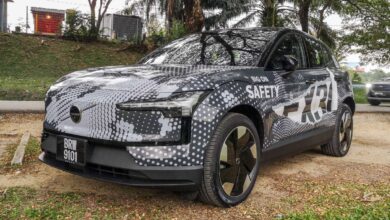2024 Middleweight Naked Bikes Guide
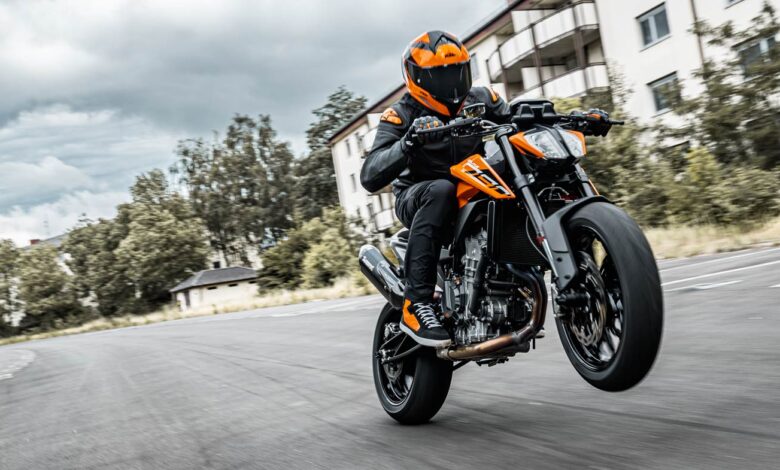
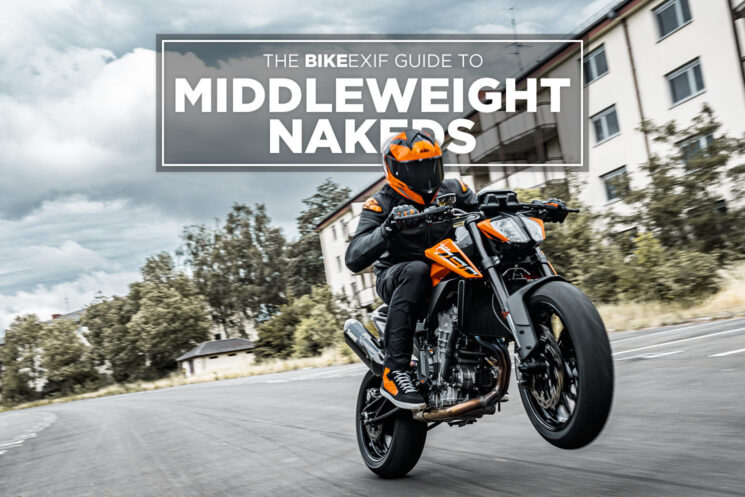
Motorcycle designers of the early ’80s probably ponder how we got here, a time when street bikes with exposed frames, unshrouded headlight assemblies and flat handlebars have become commonplace. The phenomenon started at least 30 years ago, and one possible explanation cites the re-styling of wrecked sports bikes in Europe as the cause.
Some call them naked bikes, and other street fighters or sport nakeds, but the fact is that stripped-down street machines are here to stay, offering all the sportiness of the latest road-going chassis and engines, but with more relaxed geometry for everyday use. Gaining popularity with stunt riders, commuters and everyday hooligans, the naked bike scene has evolved into its own segment, with all the big manufacturers offering dedicated chassis and engine packages from mild to wild.
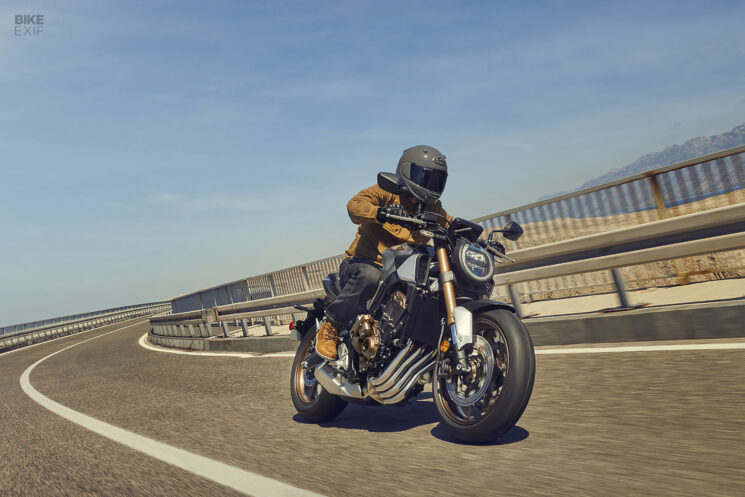
There’s as much performance available in the naked bike scene as your frontal lobe can process, but a huge cross-section of riders worldwide opt for what we call middleweight nakeds. Typically sporting 600 to 800 cc, these bikes appeal to new and intermediate riders alike, offering user-friendly features to build skills, and enough pavement prowess to widdle down your chicken strips. We’ve assembled the best of the field for your perusal in our 2024 Guide to Middleweight Naked Bikes.
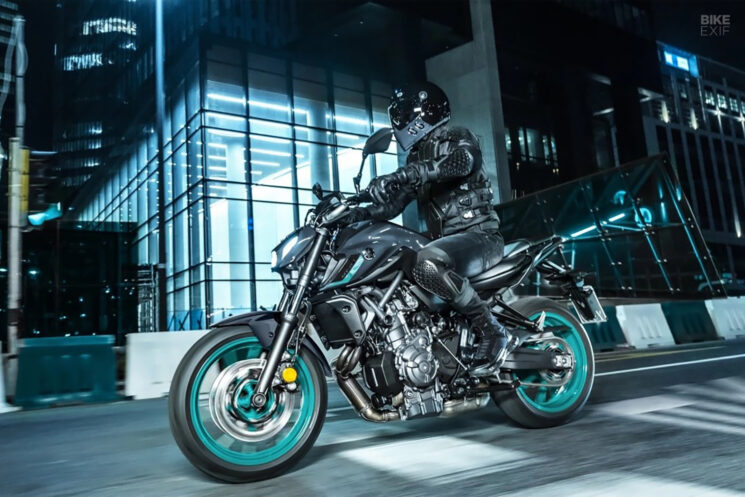
Yamaha MT-07
At a glance 689 cc parallel twin—270-degree crank, 75 hp, 68 Nm, 17-inch cast aluminum wheels, 41 mm telescopic KYB fork, link-type KYB single coilover rear shock—130 mm stroke, 406-pound curb weight.
A dominating force in the segment for a decade, Yamaha’s MT-07 has arguably become the standard by which all other intermediate naked bikes can be judged. Both capable and approachable, there’s been little need to reinvent the MT since its debut as the FZ-07 in 2014, and the 270-degree CP2 engine continues to draw fanfare.
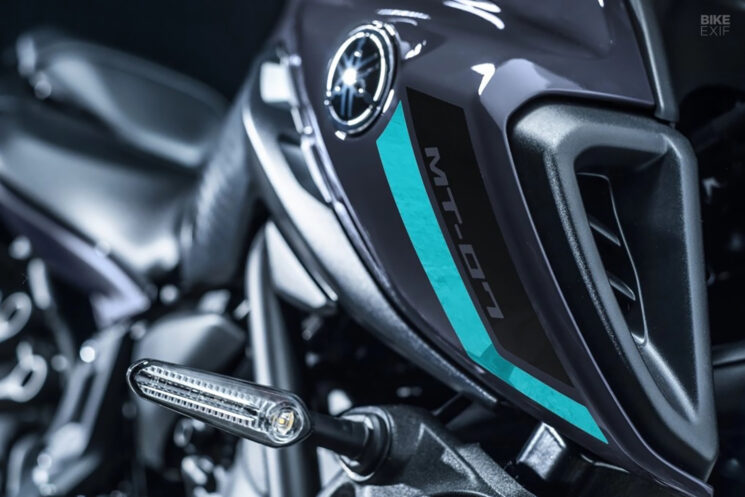
The MT-07 package was designed to appeal to the masses from day one, offering a relatively light 406-pound curb weight and a super-approachable 31.7-inch seat height. The KYB suspension and ABS-only brake package provide predictable performance for beginner and intermediate riders, and wide, tapered handlebars offer spacious and comfortable ergonomics.
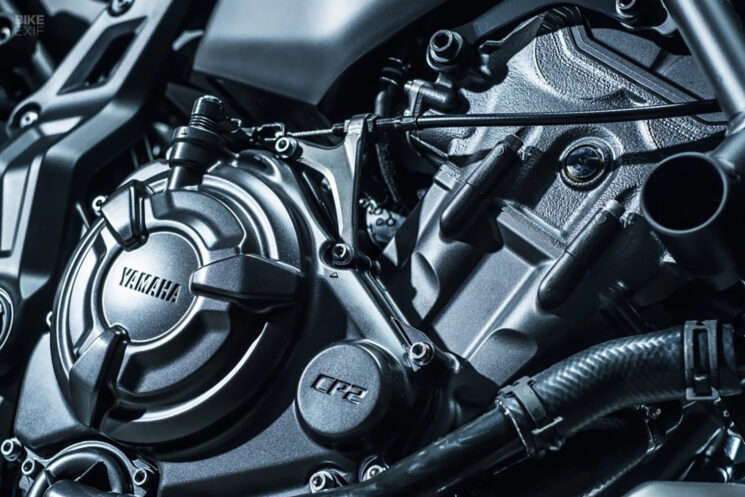
It takes a little something extra to account for the MT’s success though, and the bike’s party piece is its unique 689 cc DOHC CP2 engine. The liquid-cooled parallel twin was designed around a 270-degree crank instead of the more conventional 180-degree standard, and the result is a mill that sounds (and feels) more like a 90-degree V-twin. While its 75 hp and 50 lb-ft of torque aren’t earth-shattering figures, the CP2 engine provides exceptional low-end and mid-range performance—and a grin-inducing soundtrack when fit with an aftermarket exhaust.
In a tightly-contested segment, Yamaha’s MT-07 spends well with an exceptionally entertaining engine, smartphone connectivity, full LED lighting and a five-inch full-color TFT display. [Yamaha]
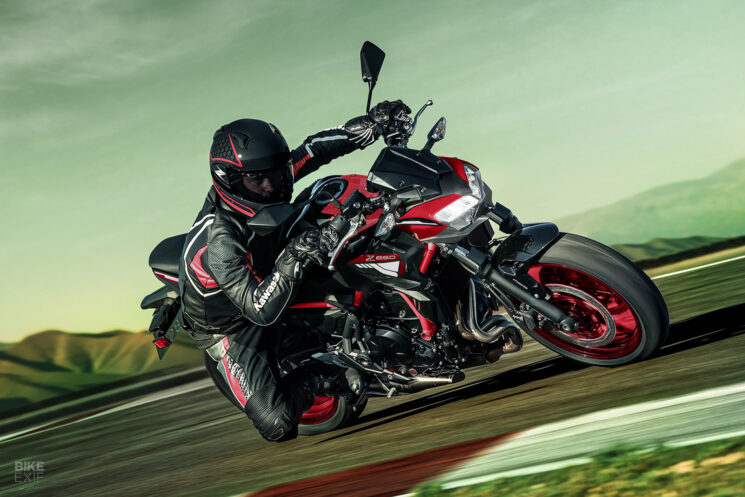
Kawasaki Z650
At a glance 649 cc DOHC parallel twin, 67 hp, 66 Nm, 17-inch cast wheels, 41 mm telescopic fork, link-type single coilover rear shock—130 mm stroke, 412-pound curb weight (non-ABS).
Intermediate naked bikes continue to be a popular choice for beginners, and if you’re after a fun and approachable option, Kawasaki has something in the stable for green riders with the 2024 Z650.
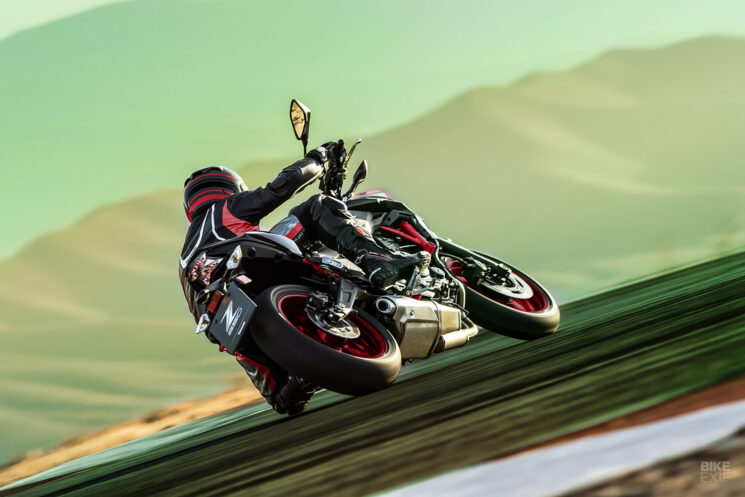
The Z650 is based on a lightweight steel trellis frame with the engine as a stressed member and Kawasaki’s ‘horizontal back-link’ rear suspension. The 41 mm telescopic fork offers 120 mm of travel without clickers to fiddle with, and the preload-adjustable rear monoshock serves up 130 mm. Riding on 17-inch cast wheels, the Z650’s saddle sits just 31” off the tarmac, and the whole platform feels more compact and approachable than many of its peers.
The Z650’s powerplant is a 649 cc parallel-twin engine with a 180-degree crankshaft, offering smooth power delivery and reduced vibration. The 10.8:1 mill produces 49 lb-ft of torque low in the rev range, which suits the Z650’s reduced size and razor-sharp handling in traffic.
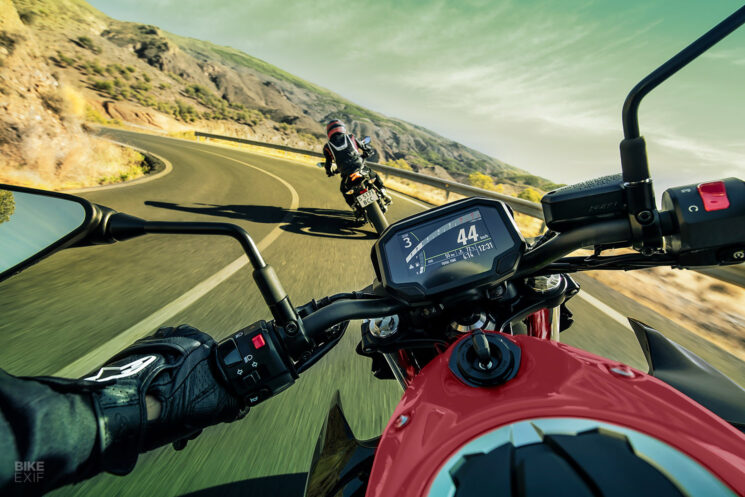
When it’s time to slow things down, the Z650’s dual 300 mm front discs with two-piston calipers really shine. The six-speed gearbox has a slipper clutch, as well, which helps mitigate rear wheel chatter during aggressive downshifts.
Like its closest rivals, the Kawasaki Z650 offers the smartphone connectivity, TFT instrumentation and traction control functionality that we’ve come to expect in the class, and we respect the availability of a non-ABS version. Purpose-built, and available in two colorways, there’s a lot to like about the Z650 for around $8,000. [Kawasaki]
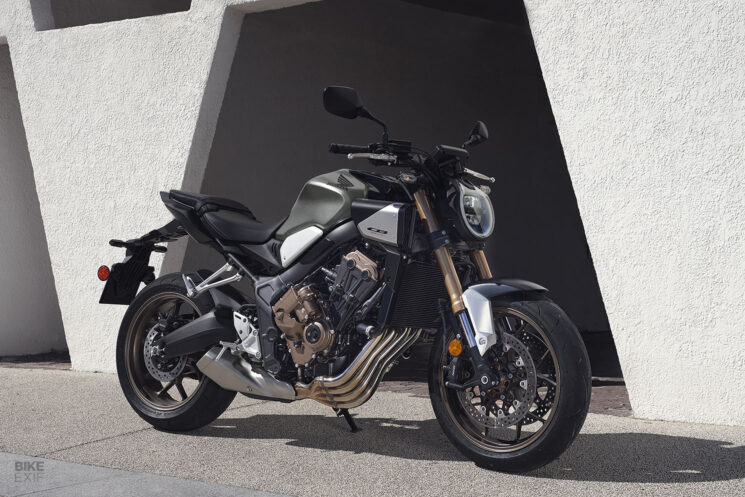
Honda CB650R
At a glance 649 cc DOHC inline-four, 94 hp, 63 Nm, 17-inch cast aluminum wheels, inverted 41 mm Showa Big Piston fork, single Showa coilover rear shock—130 mm stroke, 456-pound curb weight.
There’s an understandable amount of hesitation one might feel when a company claims to have improved a machine with more technology, especially when it involves the human element of shifting gears. However, in the case of the 2024 Honda CB650R, they might have actually done so with the all-new E-Clutch system.
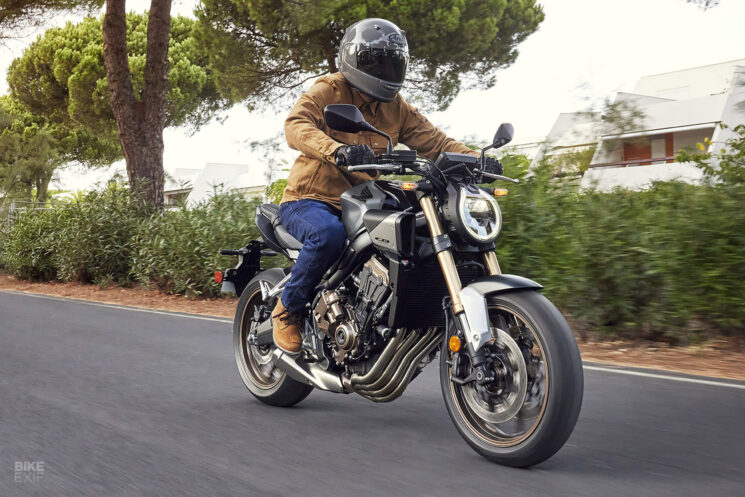
Already on the spicier end of the middleweight naked bike spectrum, Honda could have as easily left the bike alone for 2024, and in many ways, they have. On the surface, the 2024 CB650R is fit with a new five-inch color TFT display, a new headlight and a revised tail. The tune of the 649 cc inline-four has also been changed slightly to improve low-end torque without affecting the 94 hp output at 12,000 rpm.
So what’s the deal, has Honda made the CB650R an automatic now? Not at all, and despite the trepidation that might result from the phrase ‘E-Clutch,’ Honda’s new tech does seem to provide the best of both worlds.
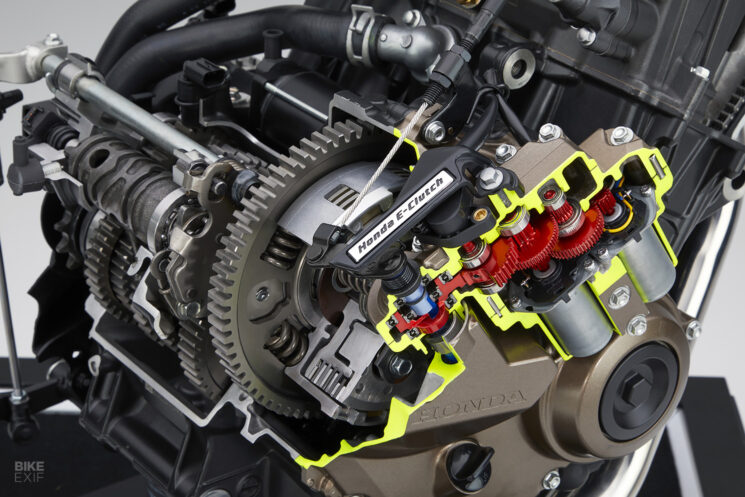
Honda’s new system consists of a pair of motors that actuate the clutch plates based on input from the shifter, throttle and wheel speed. So in effect, you can take off and ride without touching the left-hand lever with the added benefit that shifts are smooth and consistent every time—and also 20% faster.
If you don’t like the quick-shifting E-Clutch system, it can be turned off completely in the bike’s TFT menu, permitting standard cable-actuated clutch function. While the unit adds about 4 pounds of weight, the benefit certainly outweighs the cost, and the stateside MSRP for the E-Clutch equipped 2024 CB has not changed from the outgoing 2023 model. [Honda]
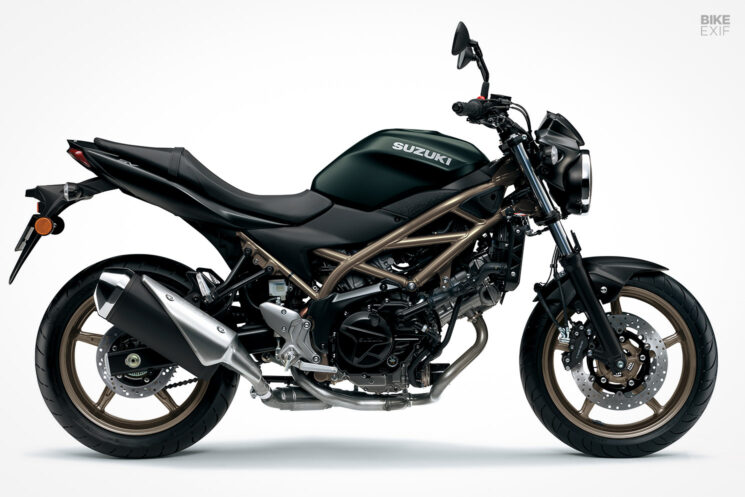
Suzuki SV650 ABS
At a glance 645 cc, DOHC 90-degree V-twin, 75 hp, 64 Nm, 17-inch cast aluminum wheels, 41 mm telescopic fork, link-style coilover rear shock, 437-pound curb weight.
Despite a brief hiatus after 2017, the V-twin-powered Suzuki SV650 has been on the market since 1999, gaining a reputation for lovable low-end grunt and rock-solid reliability. With Suzuki adding a pair of fresh middleweights to the lineup for 2024, it comes as a surprise that the brand would roll the 2023 model into 2024, but they have.
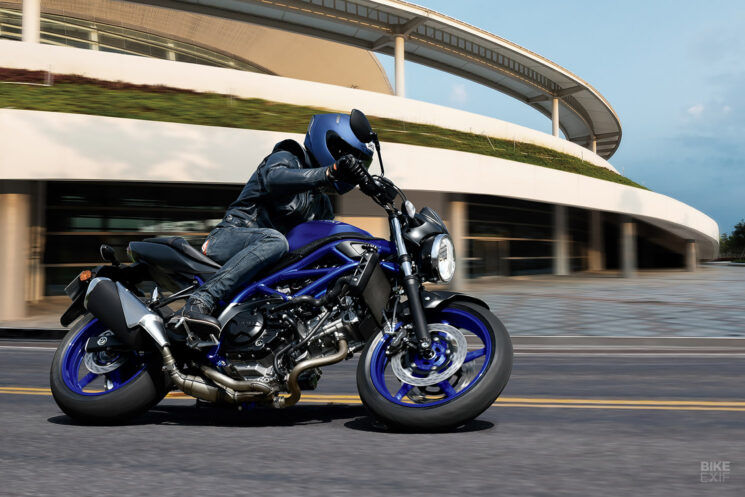
There’s absolutely nothing new about the 2024 SV650, as even the ‘Glass Sparkle Black’ colorway comes directly from the 2023 model (Suzuki’s press materials are teasing that new colors will be dropping soon), and there have been no major updates since 2017. The same as it’s been, the SV650 is based on an attractive steel trellis chassis with minimal bodywork and standard suspension—and it’s only available in ABS trim for 2024.
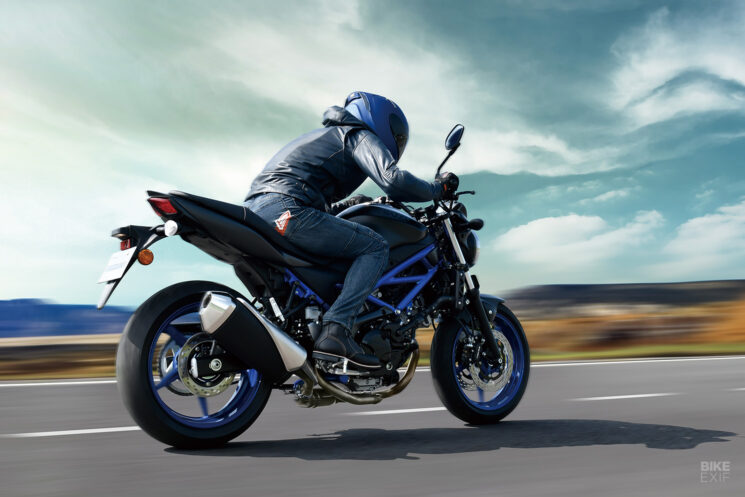
The SV650’s 90-degree V-twin churns out a reliable 47 lb-ft of torque at 8,100 rpm, and since none of the bikes in this segment are freeway fliers, this grunty performance makes all the difference around town and in the twisties. If you’re a less experienced rider, the torquey powerband of the SV means more fun lower in the rev range, and a pair of 290 mm front discs with four-piston Tokico calipers help bring the SV650 to a halt. The bike also boasts the lowest seat height in the segment at 30.9 inches, and weight is a manageable 437 pounds at the curb.
Suzuki’s charismatic powerplant is what keeps the SV relevant in this conversation, because as in life, variety is the spice of the middleweight naked bike scene. [Suzuki]

Triumph Trident 660
At a glance 660 cc, DOHC inline three-cylinder, 81 hp, 64 Nm, 17-inch cast aluminum wheels, inverted Showa 41 mm Separate Function Forks, Showa coilover rear shock, 417-pound curb weight.
Triumph has a history of bringing a little something extra to the segment with its enticing middleweight roadsters—just think of what the original 675 cc Speed Triple did back in the early 2000s. And while Triumph has sharpened its pencil in more recent times, there’s no doubt the fun-loving DNA of the old 675 is present in Triumph’s current three-cylinders, especially the 2024 Trident 660.

Classic Triumph through and through, the Trident 660 debuted in 2021 with textbook roadster styling and Triumph’s punchy 660 cc DOHC triple engine. On paper, the mill is good for 81 hp at 10,250 rpm and 47 lb-ft at 6,250 rpm. Striking a balance between the characteristics of a twin and an inline-four, the 660 has 90% of its power available across most of the rev range, all without losing its rev-happy nature. The linear power delivery, combined with a slick six-speed gearbox and a slip-assist clutch, makes the Trident 660 an ideal combination for newer riders and satisfying for seasoned ones.
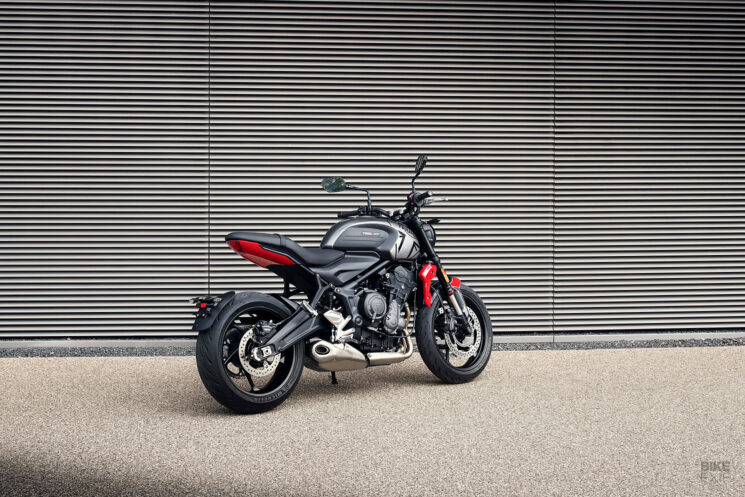
The Trident 660’s chassis has been designed to offer agile handling without sacrificing the stability and sensibility essential to new riders. The formula starts with a tubular steel perimeter frame paired with a Showa 41 mm Separate Function Fork (SFF) and a Showa preload-adjustable rear monoshock. Aluminum 17-inch wheels are hauled in by Nissin two-piston calipers with dual 310mm front discs and a single 255mm rear disc, backed by a standard dual-channel ABS.
The Trident 660 excels with its modern-retro design, and the use of clean round lines is refreshing in a segment dominated by sharp angular features. The TFT-LCD instrument cluster is well-crafted for a basic unit, integrating turn-by-turn navigation and GoPro control. [Triumph]
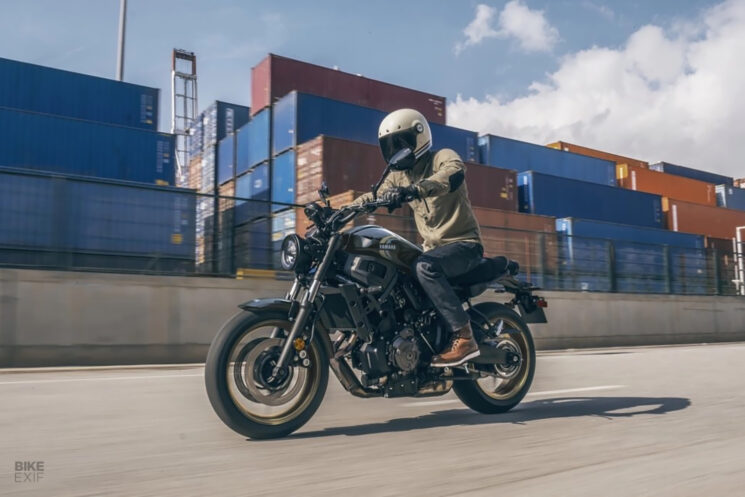
Yamaha XSR700
At a glance 689 cc parallel twin—270-degree crank, 75 hp, 68 Nm, 17-inch cast aluminum wheels, 41 mm telescopic KYB fork, link-type KYB single coilover rear shock—130 mm stroke, 410-pound curb weight.
Suppose you pay close attention to the mechanical specs above. Keen eyes will notice a striking resemblance to the Yamaha MT-07, because, in effect, the Yamaha XSR700 is a styling exercise based on the MT. Mechanically they’re the same, save for a few pounds, but if we all made purchasing decisions based on spec sheets alone, I suppose the parking lots would be full of nothing but Ducatis and KTMs. And what a shame that would be.
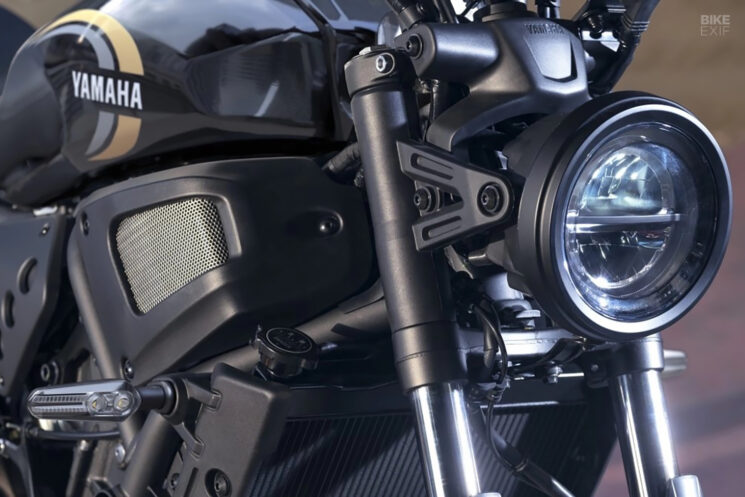
Considering all the sharp lines and angularity of the MT, Yamaha deserves props for offering something for the retro crowd, and the XSR draws inspiration from XJ Secas of the early ’80s. In place of the MT’s standard bodywork sits a rounded retro fuel tank and minimalist two-up saddle with round LEDs on both ends. The bars are also taller and wider than the MT’s, promoting more casual ergonomics for city commuting.

Since the mechanicals of the MT-07 are held in such high regard, there’s little to scoff at when in terms of the XSR’s nuts and bolts. Engine output is the same 75 hp at 9,000 rpm and the suspension setup is identical to the MT. It is a shame Yamaha did away with the rebound adjustment on the XSR’s rear shock, especially considering the premium you’ll pay for retro style. The XSR also gives up a little weight, weighing in at 410 pounds at the curb, but we’ll chalk up the difference to the amount of carbohydrates you can consume at your local spot. [Yamaha]
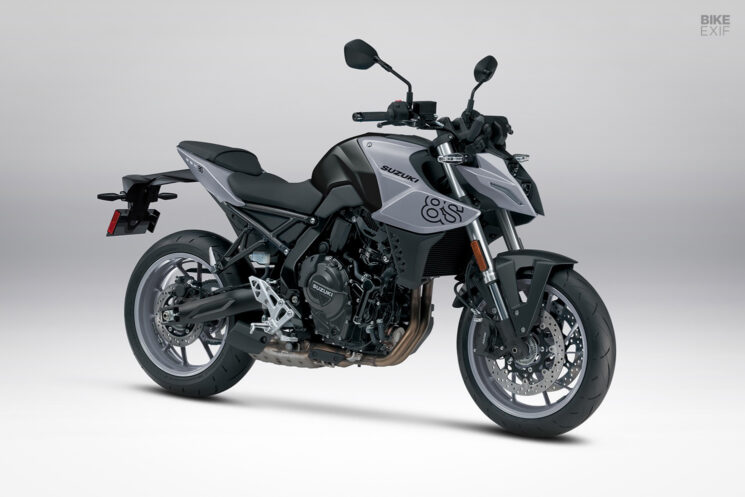
Suzuki GSX-8S
At a glance 776 cc DOHC parallel twin—270-degree crank, 82 hp, 79 Nm, 17-inch cast aluminum wheels, inverted 41 mm KYB fork, link-type KYB single coilover rear shock—130 mm stroke, 445-pound curb weight.
As the smallest of the big four Japanese manufacturers, we certainly can’t blame Suzuki for sticking to their guns on the street, and for years that’s been inline fours of GSX-R fame. But with regulations and competition evolving, even Suzuki saw the need to develop an all-new platform to capitalize on the growing middleweight naked scene—and it happens to be a twin.
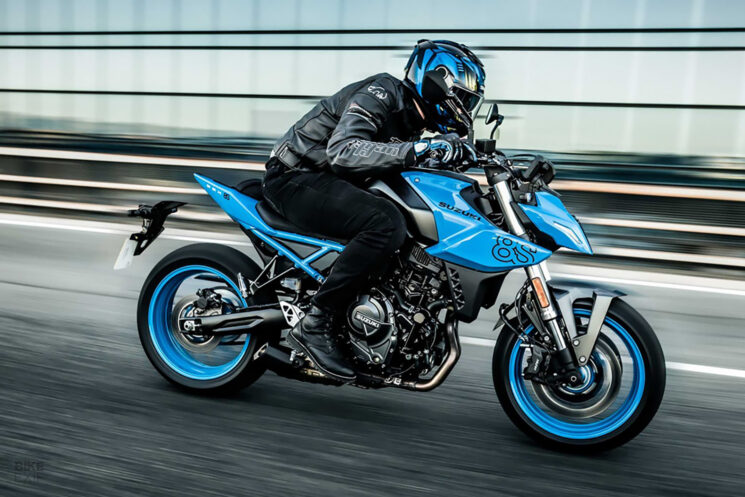
So yes, Suzuki is powering its next-generation naked bike with a thumping twin engine, but unlike the aging SV650, the 2024 GSX-8S is a ground-up design with a state-of-the-art, 776 cc 270-degree parallel mill. Built with 70 mm stoke and a pair of counterbalancers, Suzuki claims the new engine delivers smooth, usable power lower in the rev range, with peak numbers of 82 hp at 8,500 rpm and 58 lb-ft at 6,800 rpm. Suzuki’s new twin is backed up by a six-speed gearbox fit with a bi-directional quick-shifter and Suzuki’s Clutch Assist System, permitting gear changes without actuating the clutch.
Underneath its skin, the GSX-8S is quite standard for the class, offering the same non-adjustable KYB suspension and 130 mm travel as many competitors. The bike’s steel backbone chassis hugs the powerplant tightly and relies on it as a structural member. Extra points are awarded in the braking category, as the 8S employs dual 310 mm front discs and radially-mounted NISSIN four-piston calipers with standard ABS.
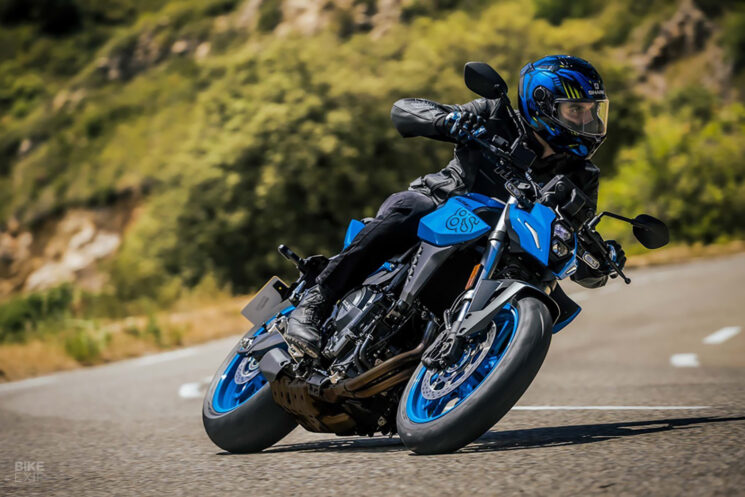
The new Suzuki’s styling and bodywork are edgy in a take-it-or-leave-it fashion, with upright ergonomics, and chunky bodywork with excellent fit and finish. An all-new 5-inch full-color TFT LCD display monitors parameters and switches between a pair of display modes based on ambient light.
Built to a competitive specification at the hotter end of the segment, there’s a lot to like in the new GSX-8S, and we expect it to be the backbone of Suzuki’s naked bike scene for years to come. [Suzuki]
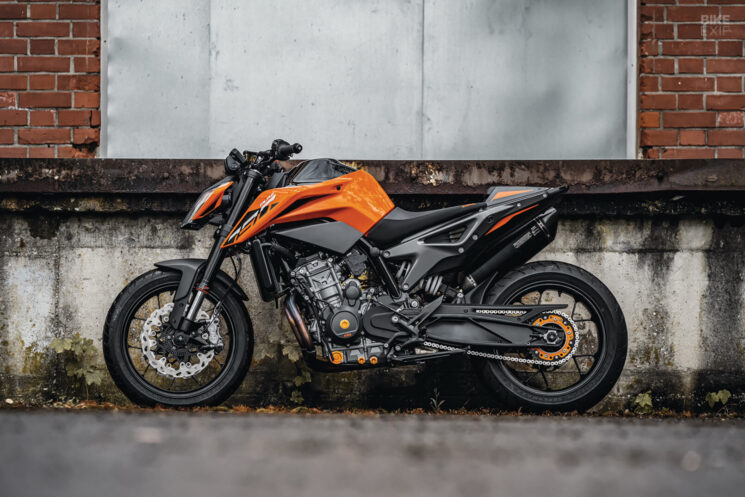
KTM 790 Duke
At a glance 799 cc DOHC parallel twin—285-degree crank, 105 hp, 87 Nm, 17-inch die-cast aluminum wheels, inverted 43 mm WP split-function fork, WP single coilover rear shock—150 mm stroke, 417-pound curb weight.
KTM and the team orange loyal have long touted the 790 Duke as ‘The Scalpel,’ and considering the power, technical sophistication and handling prowess the Duke brought to the table, it’s not hard to see why. Sure, a lot has changed since the Duke’s inception in 2017, with production shifting overseas and stiffening competition, but by all accounts, the scalpel is still just as sharp.
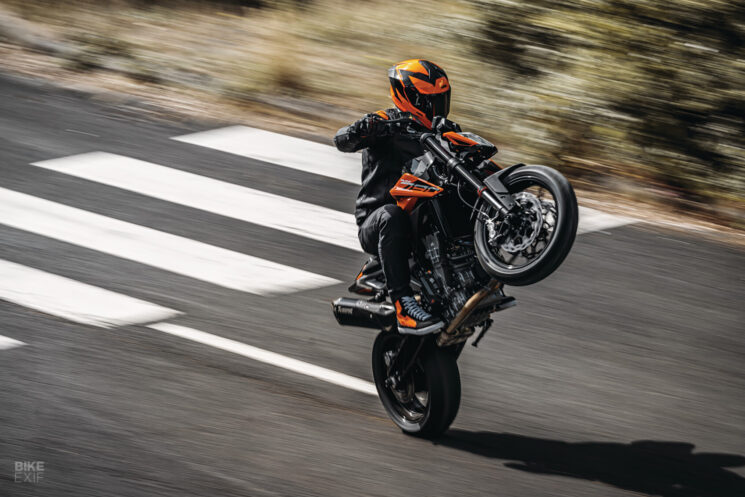
With other purpose-built middleweights in the stable, KTM makes no effort to disguise the 2024 790 Duke’s hoon-happy nature, and its upright ergonomics, strong lean angle and complete lack of wind protection make for a proven combination within its intended use. The Duke’s based on a stiff tubular steel chassis with the engine as a stressed member, and a trick die-cast swingarm supports the 17-inch rear alloy.
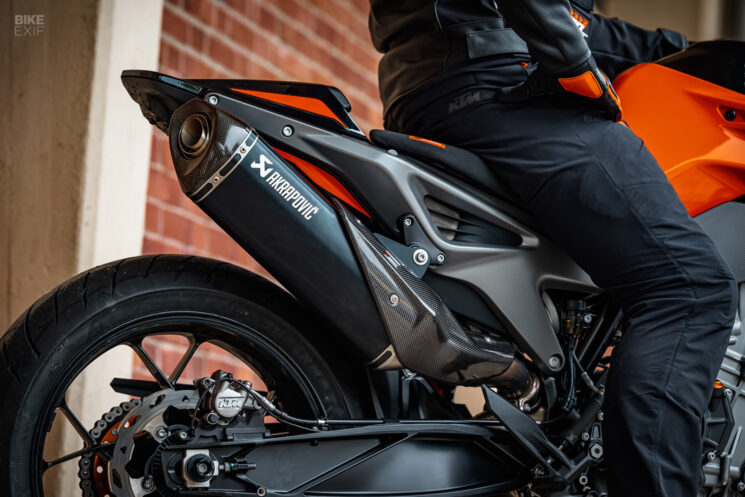
A 43 mm inverted WP split-function fork is used up front, handling compression and rebound dampening in separate legs, and the rear’s a single WP coilover. The Duke’s suspension is well-suited for commuting and backroads barnstorming, but the addition of adjustment knobs would be a welcome one. Stopping power is more than adequate with a pair of radially mounted 300 mm front discs with four-piston calipers.
As the first bike to be fitted with a Bosch six-axis IMU, a feature that’s become the new standard, the Duke has a reputation for techiness to uphold. Lighting is full LED, it’s fit with a multicolor TFT display and available riding modes are among the best in the segment.
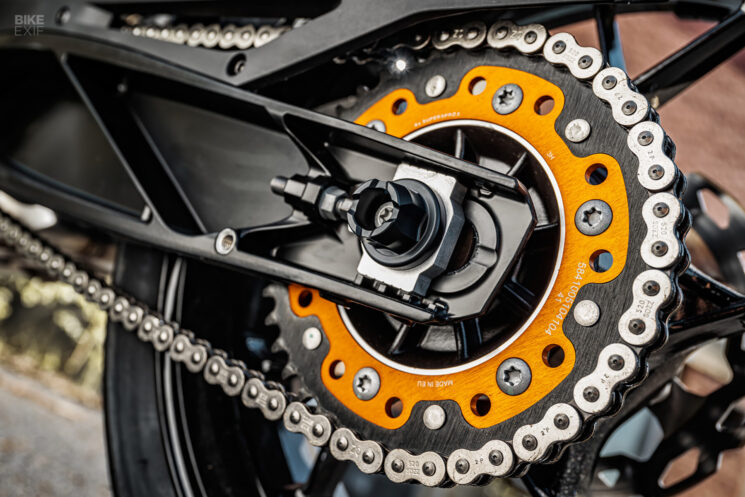
A bit more on the aggressive end of the spectrum, the 790 Duke is aimed at more experienced riders given its 105-hp output and 32.5-inch seat height—and comes with the requisite price tag as well. [KTM, | Images by Rudi Schedl]]
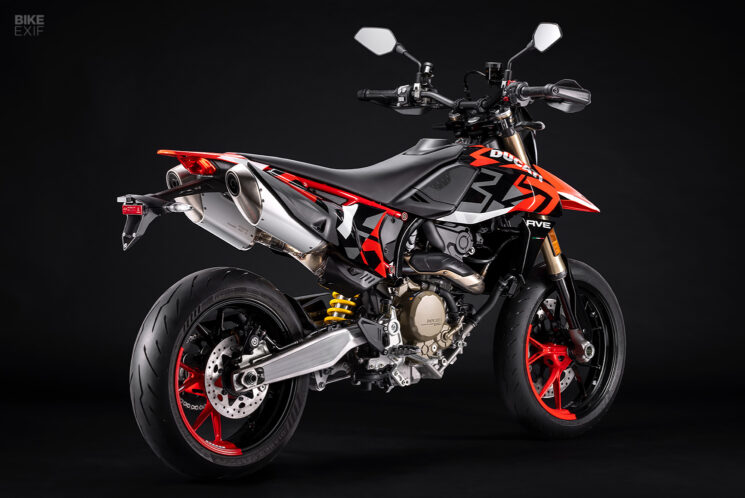
Ducati Hypermotard 698 Mono
At a glance 659 cc single cylinder, Desmodromic valve system, 78 hp, 63 Nm, 17-inch cast alloy wheels, adjustable 45 mm inverted Marzocchi fork, progressive link Sachs adjustable rear shock—240 mm stroke, 351-pound curb weight.
Is it a fair shake to compare Ducati’s 2024 Hypermotard 698 to a score of intermediate naked bikes? Probably not in practice, but on paper the Ducati has more in common with these middleweights than you’d expect. Its ergonomics are upright, displacement is right in line with the others and its intended purpose falls just short of extended highway use. Until Ducati makes a dedicated enduro version of 698 Mono, we’ll include it here for the sake of conversation, because who wouldn’t want a bit more hooliganism in their commute?
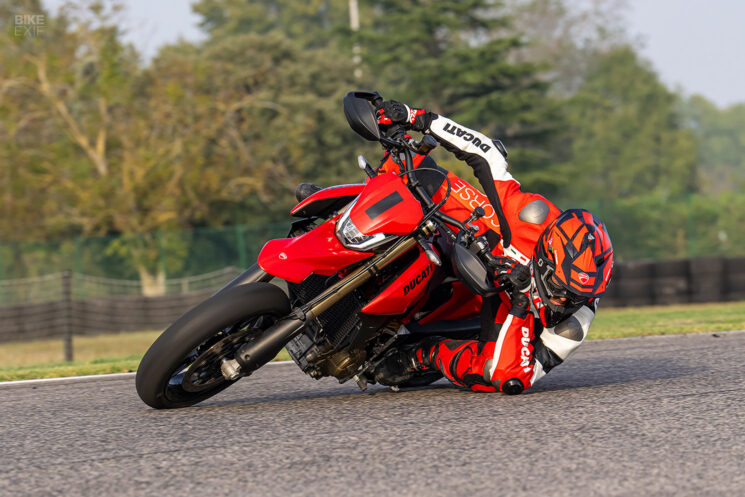
We covered the Hypermotard 698 Mono in full when Ducati broke the news back in November, but for now, we’ll review just enough to get your gears turning. Our first look at the 698 Mono came just after the release of the new Superquadro Mono 659 cc Desmo single, the first new single-cylinder from Ducati in roughly 30 years. Basically, it’s half of a 1299 Panigale engine, with a 116 mm bore, titanium intake and steel exhaust valves and a Desmodromic valve system. It spins up to 10,250 rpm and makes 77.5 hp at 9,750 rpm and 47 lb-ft at 8,000 rpm.
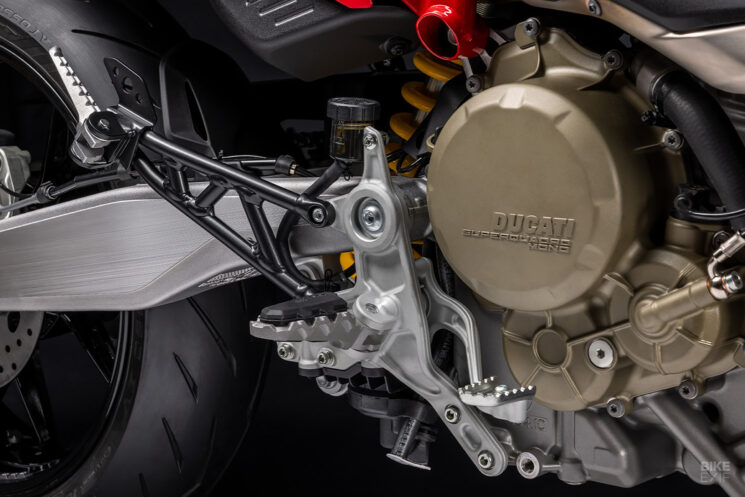
The 698 Mono’s rev limiter is set at 10,250 rpm, a number Ducati claims is unmatched by any other single, and the power numbers are certainly impressive compared with its peers. Going a step further, you’ll get over 9,000 miles on an oil change, and over 18,000 miles on valve checks. With these service intervals, the Mono will certainly go the distance on the street, provided you’re up for the aggressive geometry and lack of wind protection.
Surrounding the high-tech thumper engine is a steel trellis chassis with the engine as a stressed member, and the adjustable Sachs rear shock provides a massive 9.4” of travel. Up front, Ducati fits a top-tier, fully adjustable 45 mm Marzocchi fork and a single 330 mm disc with a radial Brembo caliper.
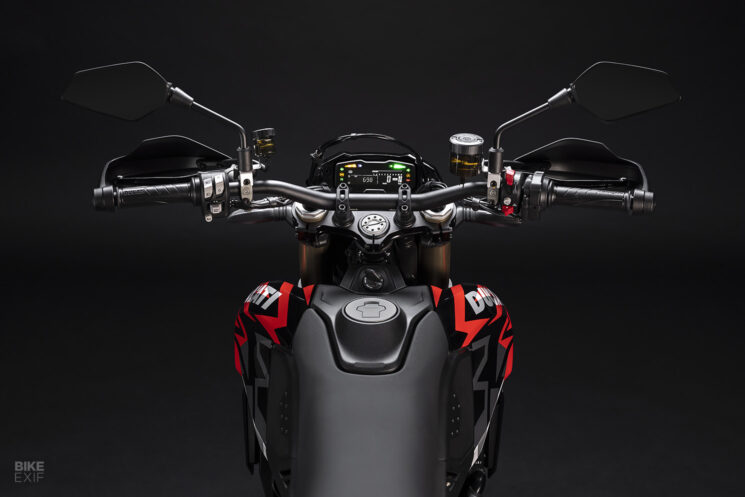
In a world of 5-inch TFT displays, the Hypermotard’s 3.8-inch LCD looks small, but the myriad of tech features it controls is anything but. There are riding modes from Wet to Sport and Urban, and variable power modes as well. You have access to Ducati’s wheelie control and wheelie assist, and also an adjustable slide-by-brake feature.
Even the basic specs for Ducati’s 698 Mono are enough to get your throttle wrist twitching, and there’s even more to be had if you step up to the hopped-up RVE model. Even the standard Mono is not a cheap bike, but certainly not an expensive one either—priced right alongside the KTM 690 SCM R. [Ducati]
